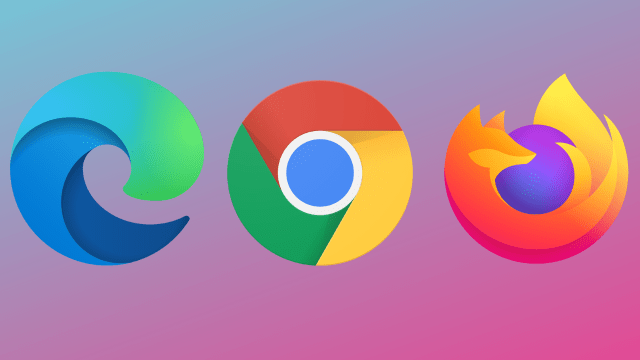If you’re thinking about moving away from Google Chrome, or whatever browser you use, know that it’s super easy to change your default browser.
Here’s how you can do it, including information on bringing your history and bookmarks over with you.
How to set your default browser
On Windows 10 and 11, you can change your default browser by opening your start menu (the Windows icon on the taskbar), and then opening Settings. From here, click Apps, followed by Default apps.
Here, you’ll be prompted to a screen of apps you have installed, including any browsers that Windows recognises. At this point, navigate to the browser you’d like to make your default browser and click on it.
You’ll be asked if you want to make the selected app your default browser, but you’ll also be presented with a bunch of file types that you can assign your browser to open. For specific file types, select your default browser if you’d like it to open them. Windows will strongly recommend that you use Edge, the inbuilt operating system, but it’s ultimately your choice.
On Mac, things are just as simple. Click on the Apple symbol in the corner of your screen and then click System Settings. Then, click Desktop & Dock on the sidebar, and then scroll down. On the right, you’ll see a “default web browser” menu, which will let you assign your chosen browser.
You can also change your default mobile browser, but we’re talking more specifically about computer browsers in this article.
Switching up which browser you use goes deeper than using the ‘change default browser’ button in your settings, though. Here’s how you can optimize your browser to be more suited to your needs.
How to bring your data to a new browser
Importing your data from an old browser to a new one is simple. Although some browsers (like Mozilla) will offer to import your data the first time you use them, this is a step-by-step way to do it across each major browser.
- On Mozilla Firefox, click the menu bottom in the top right (3 horizontal lines) and click bookmarks. Then, click manage bookmarks, followed by Import and Backup, then Import from Another Browser. You’ll need to follow the Import Wizard from here on out, but you’ll be able to bring your bookmarks, saved passwords and search history with you. Your imported bookmarks will create a new folder from the imported bookmarks.
- On Chrome and Brave, click the menu bottom in the top right (3 lines or dots) and then click bookmarks. Then, click “Import bookmarks and settings”. You’ll be taken immediately to the import menu, Which lets you choose your old browser from a dropdown menu and import your browsing history, bookmarks, passwords and auto-fill form data. Once you’ve selected which ones you’d like to bring over, click Import.
- On Edge, click the three horizontal dots in the top right, followed by settings. then, click Import browser data, where you’ll be asked if you’d like to import from another browser. Click Choose what to import, followed by your chosen browser, and what data you’d like to bring over (including bookmarks which are called ‘favourites’ on Edge, passwords, payment info, browsing history, personal info, settings and Chromium extensions). Once you’ve selected everything you want, click Import.
- On Opera, click on the three horizontal lines in the top right, followed by Go to full browser settings. Scroll down to Synchronisation and click Import bookmarks and settings. Here, you can choose your old browser from a dropdown menu and import your browsing history, bookmarks, passwords and auto-fill form data. Once you’ve selected which ones you’d like to bring over, click Import.
- On Safari, choose the File button, followed by Import From, and then the browser of your choice. Select the items that you’d like to import, including history and bookmarks, and click Import.
These settings don’t vary from browser to browser significantly, so if you’re switching to a browser not included on this list above and you want to bring your old browser data over, know that it’d likely be a similar process.
Why should I change my default browser?
Maybe it’s because you’d like to try something new, or maybe it’s because you’re interested in some of the features on offer with another browser. Some browsers are faster than others, while others offer better privacy features. Some also offer thematically different experiences, such as the Opera GX browser, which is a browser intended for gamers.
Google Chrome, in particular, is fairly notorious for being a resources hog. An easy way to sort this out is by closing all of your unused tabs, but even when you’re only using a small assortment of tabs, you might notice a slower speed than on an alternative browser.
For me, I’m most interested in Mozilla Firefox, as I’ve just switched over from Chrome. I’ve noticed faster speeds with multiple tabs and browser windows open, and although I love the Google ecosystem, I don’t feel like I’m missing out on anything.
It all boils down to preference and what you want out of a browser. This is why it’s valuable to try out different ones and find your best fit.
